Key takeaways:
- A media kit serves as a concise introduction to your brand, highlighting your mission, values, and unique strengths while fostering emotional connections through impactful design and testimonials.
- A well-designed media kit communicates professionalism and attention to detail, serving as a bridge to new opportunities by effectively showcasing your unique value proposition.
- Incorporating personal touches, such as handwritten notes and team stories, creates a memorable connection and fosters trust with potential clients or partners.
- Finalizing a media kit requires clarity, collaboration, and a focus on visual appeal to ensure it resonates well and communicates effectively with the audience.
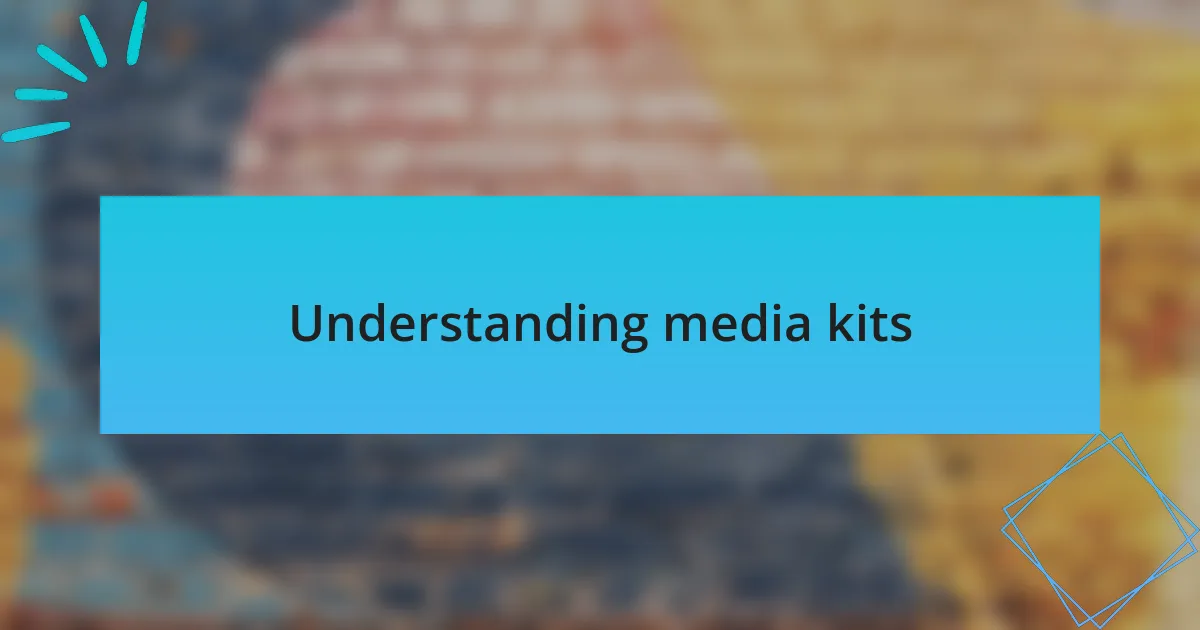
Understanding media kits
Media kits serve as a concise introduction to your brand, helping potential collaborators grasp who you are at a glance. When I first created my media kit, I was surprised at how much clarity it provided—not just for others, but for me as well. It highlighted the strengths of my design agency and identified what truly sets us apart.
Within a media kit, you’re essentially curating your story, showcasing your mission, values, and the services you offer. It’s interesting to think about how every piece of information you choose to include shapes perceptions. Have you ever considered how visuals can elevate your narrative? I’ve made sure to include impactful design work in my media kits to create an emotional connection, showcasing the essence of what we do.
Furthermore, it’s not just about listing your achievements; it’s about sharing your journey. I remember including testimonials from clients who were genuinely moved by our work. Reading their words, I realized that those endorsements not only lend credibility but also evoke a sense of trust. How can you show your audience that your agency is not just a business but a passionate partner in their creative endeavors? A well-thought-out media kit can answer that question beautifully.
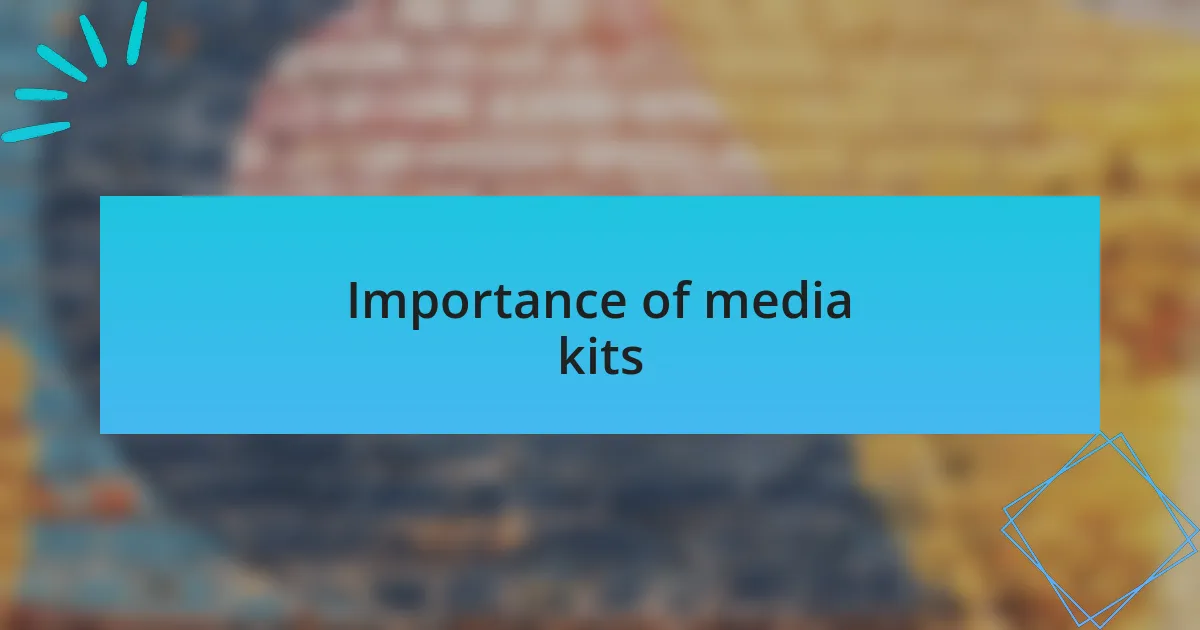
Importance of media kits
When I think about the importance of media kits, I often recall how they serve as a bridge to new opportunities. A strong media kit not only provides essential information but also stands out in the overcrowded digital landscape. It invites partners and clients to envision a collaboration, prompting them to consider, “Why should I choose this agency over another?”
One aspect that I find particularly crucial is how media kits can communicate professionalism and attention to detail. I remember receiving feedback from a potential client who was impressed by the cohesiveness of my media kit; they stated it made them feel confident about engaging my agency. It’s fascinating to realize that the design and presentation of your media kit can influence perception—what does your branding say about you at first glance?
Additionally, media kits allow you to articulate your unique value proposition effectively. When I’ve presented my media kit, it was an opportunity to showcase not just who we are but what drives our passion for design. Reflecting on what I included, I sometimes wonder, do I convey the full range of our expertise? Balancing facts and storytelling in a media kit is essential, as it goes beyond mere details—it’s about resonating with the audience on a deeper level.
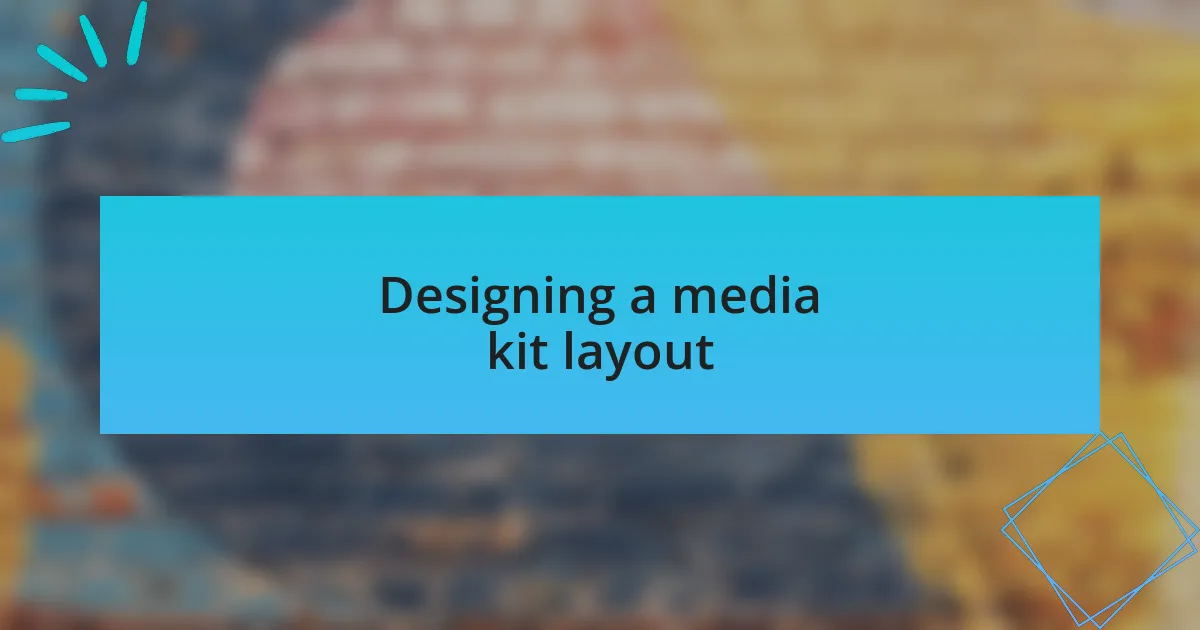
Designing a media kit layout
When I approach designing a media kit layout, I focus on creating a clean, visually appealing structure. My experience has taught me that a well-organized layout guides the reader’s eye smoothly through the information. I often use ample white space to prevent clutter, allowing important content to shine—think of it as breathing room for your design elements.
I also believe that incorporating visual elements, like graphics or infographics, can enhance comprehension and engagement. For instance, when I included a colorful infographic outlining our design process, I noticed that recipients were more likely to inquire about our services afterward. It made me realize that visuals can tell a story quickly and effectively—how can you convey your story without overwhelming your audience?
In terms of hierarchy, I always prioritize the most impactful information at the top. This strategy has worked well for me; when I placed key statistics and awards prominently, it immediately captured attention. Reflecting on this, I often ask myself, are my layouts serving to entice interest and spark conversations? Your media kit layout should be more than just functional—it should be an experience that resonates with your audience and keeps them engaged.
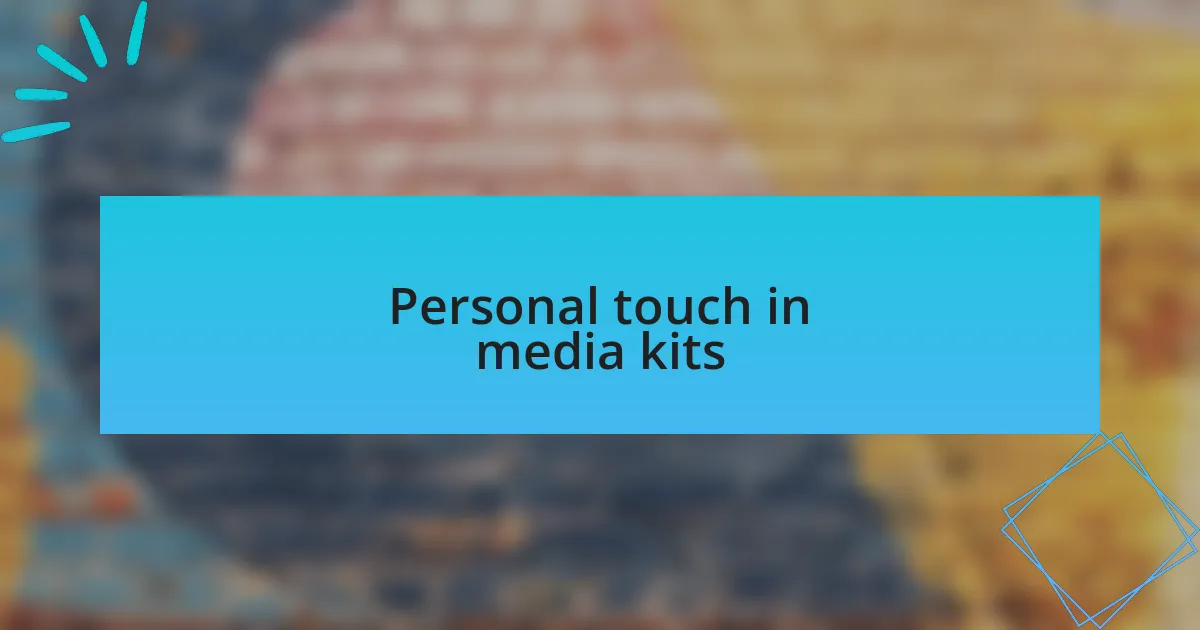
Personal touch in media kits
Adding a personal touch to media kits is something I truly value in my design process. When I include handwritten notes or personalized covers, it creates an immediate connection with the recipient. It sparks a joy that I feel when I receive something unique in my own inbox. Have you ever experienced that thrill? Those small gestures show that you care about your audience and their experience, making your brand more memorable.
I also like to showcase team stories or testimonials in my media kits. By highlighting individual team members and their contributions, I invite recipients into our culture and ethos. For instance, I once shared a short anecdote about our graphic designer’s creative journey, which gave life to our services in ways that statistics never could. It made the kit feel less like a sales pitch and more like an invitation to be part of our story.
Another element I often incorporate is relevant personal achievements or challenges we’ve overcome. I remember including a brief narrative about a project that didn’t go as planned but led to several valuable lessons. This transparency fosters trust and relatability. I find myself wondering, how can vulnerability in our achievements inspire others? It’s fascinating how sharing our human side can forge a deeper connection with clients and partners, transforming our media kit into a genuine conversation starter.
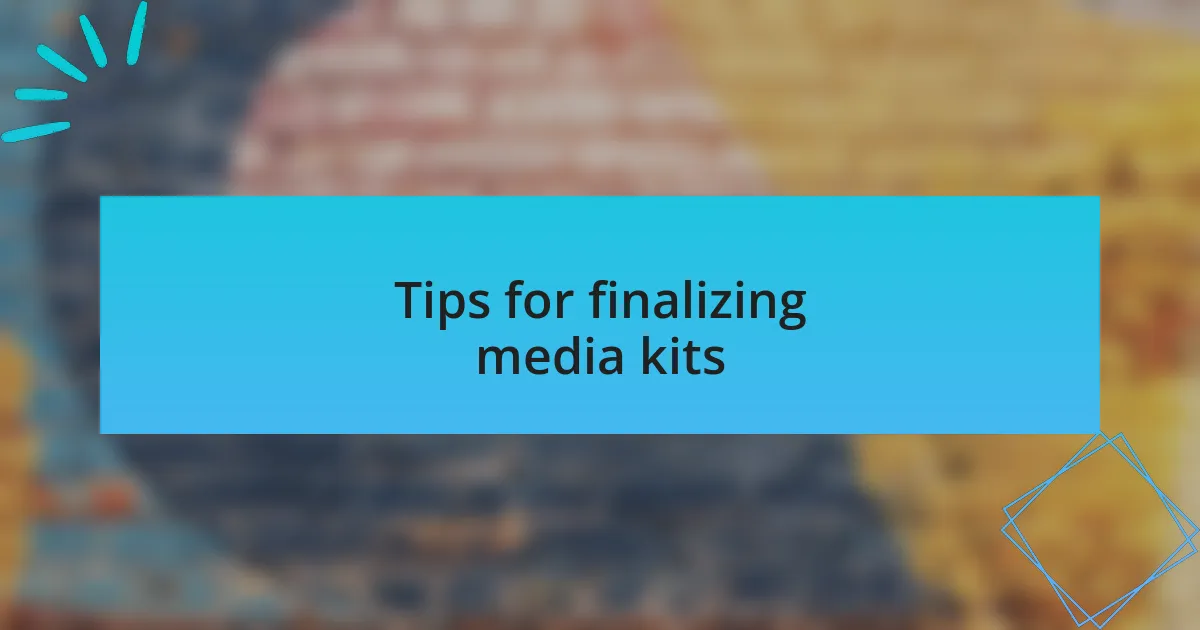
Tips for finalizing media kits
When finalizing a media kit, clarity is essential. I always double-check that all the information is straightforward, ensuring that potential clients or collaborators can easily grasp what I’m offering. One time, I overlooked a minor detail in the pricing section, which led to confusion during a pitch meeting. Ever had a similar moment? It serves as a reminder that precision in your kit can be the difference between interest and miscommunication.
I also recommend having a second pair of eyes review the kit before sending it out. A colleague of mine had a keen eye and caught several typos and inconsistencies in my layout that I had missed. This not only improved the professionalism of the document but also made me realize the value of collaboration. Who benefits most from these extra sets of eyes? Your brand’s reputation does, and that’s invaluable.
Lastly, consider the visual appeal of your media kit. When I decided to revamp mine, I focused on color schemes and typography that aligned with my brand identity. The transformation was remarkable; I saw an increase in responses from potential clients who commented on the aesthetics. Isn’t it interesting how attractive design can elevate the general perception of our work? A compelling visual presentation often speaks louder than words alone.